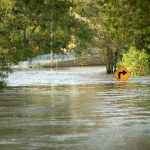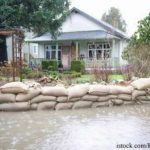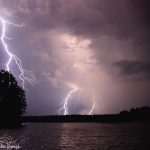The U.S. Department of Agriculture (USDA) has compiled some food safety tips for residents of Louisiana affected by the flood and those living in parishes currently under flood warning. Parishes under flood warning include: Livingston, West Baton Rouge, Northern St. James, Northern St. John, Pointe Coupee, Iberville, East Baton Rouge, and Ascension. Those already affected include: Baton Rouge, Zachary, Baker, Denham Springs, Gonzales, Donaldsonville, Melville, Oak Hills Place, Far northern portions of Reserve, Far Northern Portions of Laplace, St. Gabriel, Walker, Gramercy, Addis, Lutcher, and Brusly. After a flood, don't eat any food including raw fruits and vegetables, or cartons of milk or eggs, that may have come into contact with flood water. Throw away these foods and any … [Read more...]
Food Safety After a Flood
Wondering about food safety after a flood? Here is what the U.S. Department of Agriculture’s (USDA) recommends: If you have advance notice of heavy rains that may produce floodwaters, buy jugs of water and shelf-stable foods that can feed your family for a few days and store them in an area flood waters are not likely to reach. Keep a jug of liquid bleach and a cooler in the same area. Find out where you can purchase dry ice. Buy appliance thermometers for your freezer and fridge. In the freezer, gather food together this will help it stay cold longer. If you lose power, a refrigerator will keep food cold for about four hours if you keep the door closed. A full freezer will keep food at a safe temperature for about 48 hours, a half-full freezer will keep food at a safe temperature … [Read more...]
5 Things to do Before Severe Weather Strikes
When severe weather strikes and the power goes out, it can be confusing to figure out what food is safe to eat. Here are five things to do before the storm that will take some of the guesswork out of severe weather food safety, according to U.S. Department of Agriculture (USDA). Make sure you have working appliance thermometers in both the refrigerator and the freezer. Safe temperatures for the fridge are 40°F or lower, in the freezer 0°F or lower. Freeze water in one-quart plastic storage bags or other small containers prior to a storm. Tuck them in between frozen foods to help keep them cold. Freeze any food you don’t plan to eat in the immediate future such as leftovers, milk, fresh or poultry. This will help to keep them at a safe temperature for a longer period of time. Group … [Read more...]
Summer Food Safety Tips From the USDA
Planning a summer picnic or barbecue? Bacteria multiplies rapidly at warm temperatures, so the U. S. Food and Drug Administration has compiled some food safety tips to help people avoid food poisoning during the summer months. Consumers need to be aware of the food "Danger Zone" when temperatures are between 40 and 140 ˚F and perishable food spoils rapidly, said Deputy Under Secretary for Food Safety Al Almanza. "Foods that should be served hot or cold should not spend more than one hour in the Danger Zone when temperatures are above 90 ˚F, and two hours when temperatures are below 90 ˚F.” Bacteria can double in number in as little as 20 minutes when perishable food is kept at temperatures in the Danger Zone. To reduce risk, keep cold food, at or below 40 °F, in the refrigerator, in … [Read more...]








